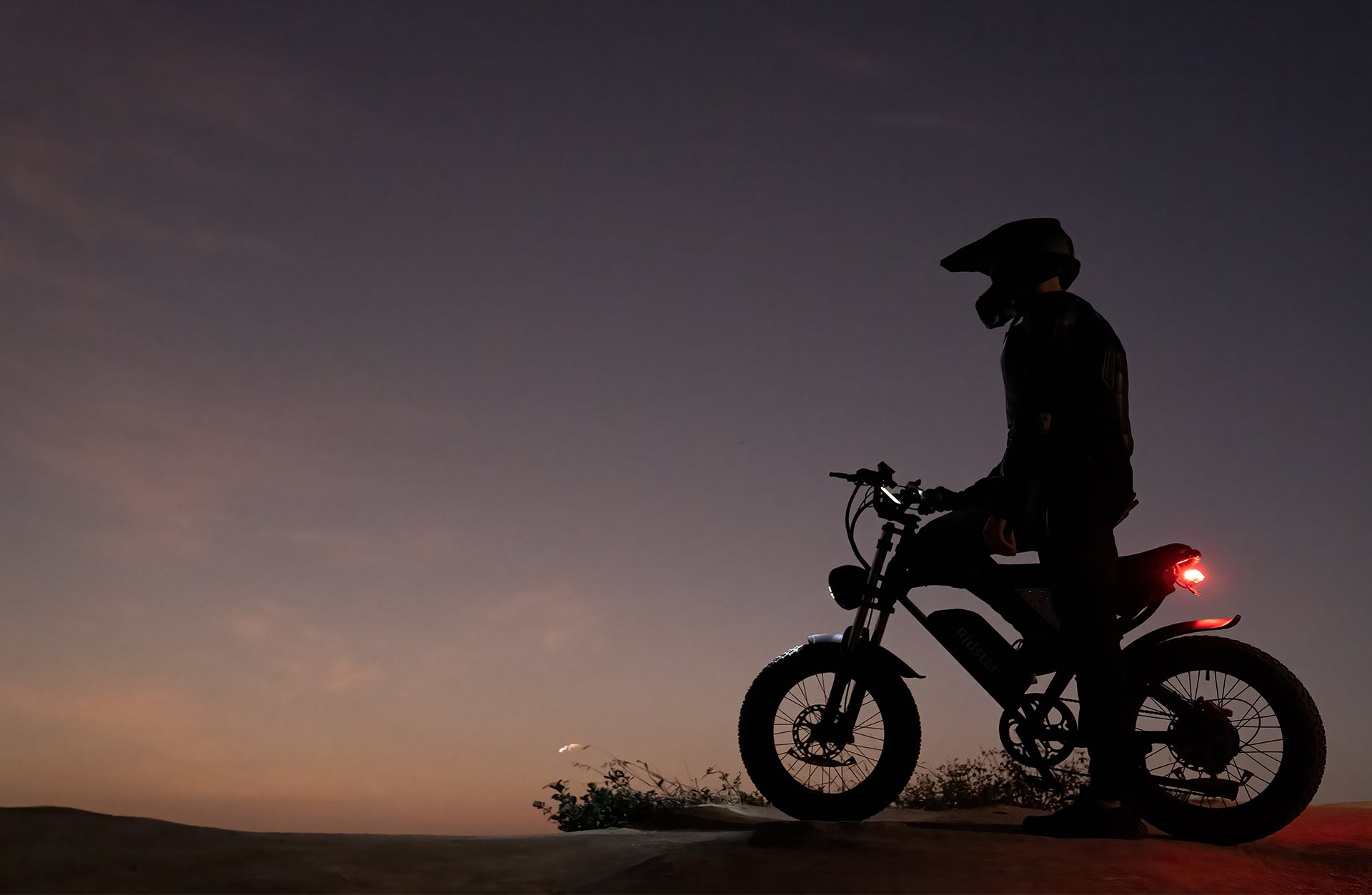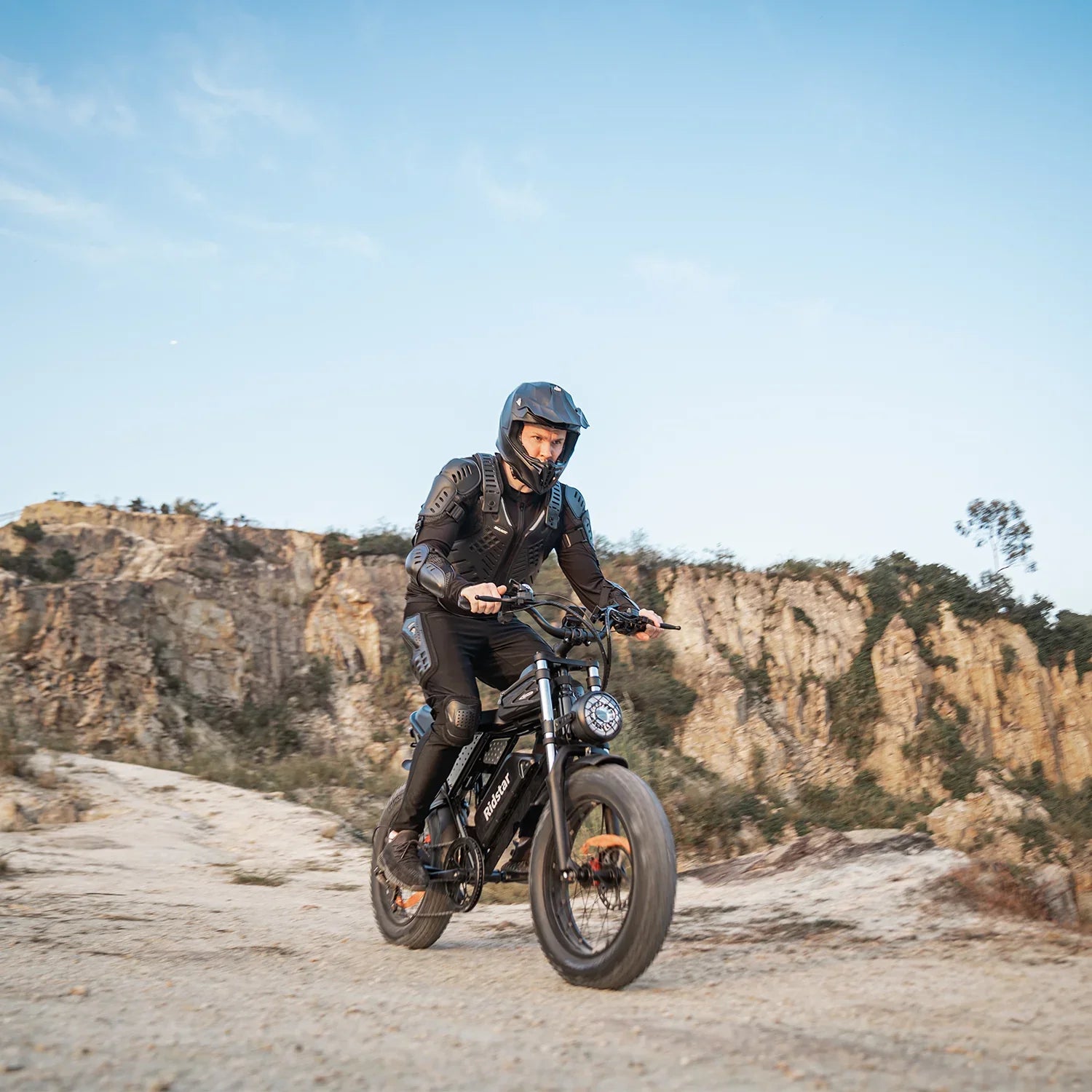Fat tire e-bikes, characterized by oversized tires (above 3.8 inches), are constructed in some manner that permits them to seamlessly grace areas where a normal bicycle will fail. You might find them helpful in some situations, yes. But doesn’t mean they don't tag along with certain limitations. You need to evaluate them first before taking the plunge. And that's what we are going to do below, shall we?
Advantages of Fat Tire E-Bikes
Strong Stability
Fat tire bikes are designed to function in extreme weather, whether it's snow and mud or areas with sand gravel or rocks. Given the tire size, the weight of the riders is more evenly distributed which makes the bike ride on a loose surface without getting stuck. This enhances control and prevents falling from the bike, especially in adverse weather conditions or where the ground is rough.
Cozy Ride
The wide tires serve as natural shock absorbers while tackling the hit from potholes, stones, and rocky trails. Typical bikes depend on suspension systems; this is not the case in fat tire bikes where the air volume of the tires is increased to soften the road's impact.
It helps in riding over extended distances in craggy areas because such situations may bring tiredness because of continuous bumping.
Versatility
Fat tire e-bikes have great versatility and do very well in different types of terrains. From the road to the rough mountain tracks, they do it all with ease. A rider need not change bikes or bother about the tires’ performance in going from riding in the city to the mountains. This means that fat tire bikes are ideal to people who want a bike that they can “go everywhere” on.
Increased Stability
With the more volume tires that fat bikes have, more footprints are created on the ground which gives the user a soft base. This can also be of great importance for beginners or riders who ride over complex surfaces. More ground coverage means more balance hence control of the bike especially at low speeds, becomes easier. This means reliability, especially on snow and sand, where surfaces are loose or slippery.
Durability and Low Maintenance
Those bicycles with fat tires are mostly low maintenance as the high-volume tires are hardly easily pierced even while riding across sharp rocks, rubbles, or thorns. Most tires can function without a suspension structure which calls mostly for double structure and parts replacement which reduces their incidence.
Disadvantages of Fat Tire E-Bikes
Heavy and Bulky
Due to the presence of large tires and a sturdy structure, they barely resemble the traditional bicycle. This extra weight can make fat tire bikes harder to maneuver especially for novices or abstainers of heavy-weight bicycles.
Additional weight coming on from the pedals on an uphill climb or sharp cuts in turns on technical terrain is extremely tiring hence long rides can be frustrating due regard to the lack of a sufficient supple structure.
Slower and Less Efficient
Fat tire bikes are not for fast riders. The wider tires add to the rolling resistance, thus making them even slower than the road or mountain bikes over flat surfaces. Should you be focused on efficiency or riding on pavements, fat bikes may be slow.
Higher Costs
The specialized parts of the fat tire e-bikes a wide range of tires, a solid frame, and a rim make these bikes expensive compared to standard road bikes. There are other models for those who want to save money, however, most of the fat tire bikes are relatively expensive on the market when compared to ordinary road or mountain bikes.
Difficult To Pedal
Wide tires increase resistance which makes it very hard to pedal a fat tire e-bike. And even, it is harder to pedal even when on flat paved sidewalks since the extra effort which is required because of the fat tires. The excessive resistance of the tires makes it very hard and tiresome to cycle.
Conclusion
Fat tire bikes serve an excellent purpose off the beaten path, providing better grip, comfort, stability and all terrain versatility. They do better in extreme conditions such as snow, sand and mud for the adventurous or nature loving cyclists. But there are also some important disadvantages which are caused by thick, heavy weight, low speed, high cost and extent of pedaling.
Fat tire bikes will appeal the most to those who are interested in comfort while riding off the road as opposed to being fast or efficient. Leisure riders, city dwellers commuters or those who want a lightweight fast machine might prefer standard variations.





Leave a comment
This site is protected by hCaptcha and the hCaptcha Privacy Policy and Terms of Service apply.